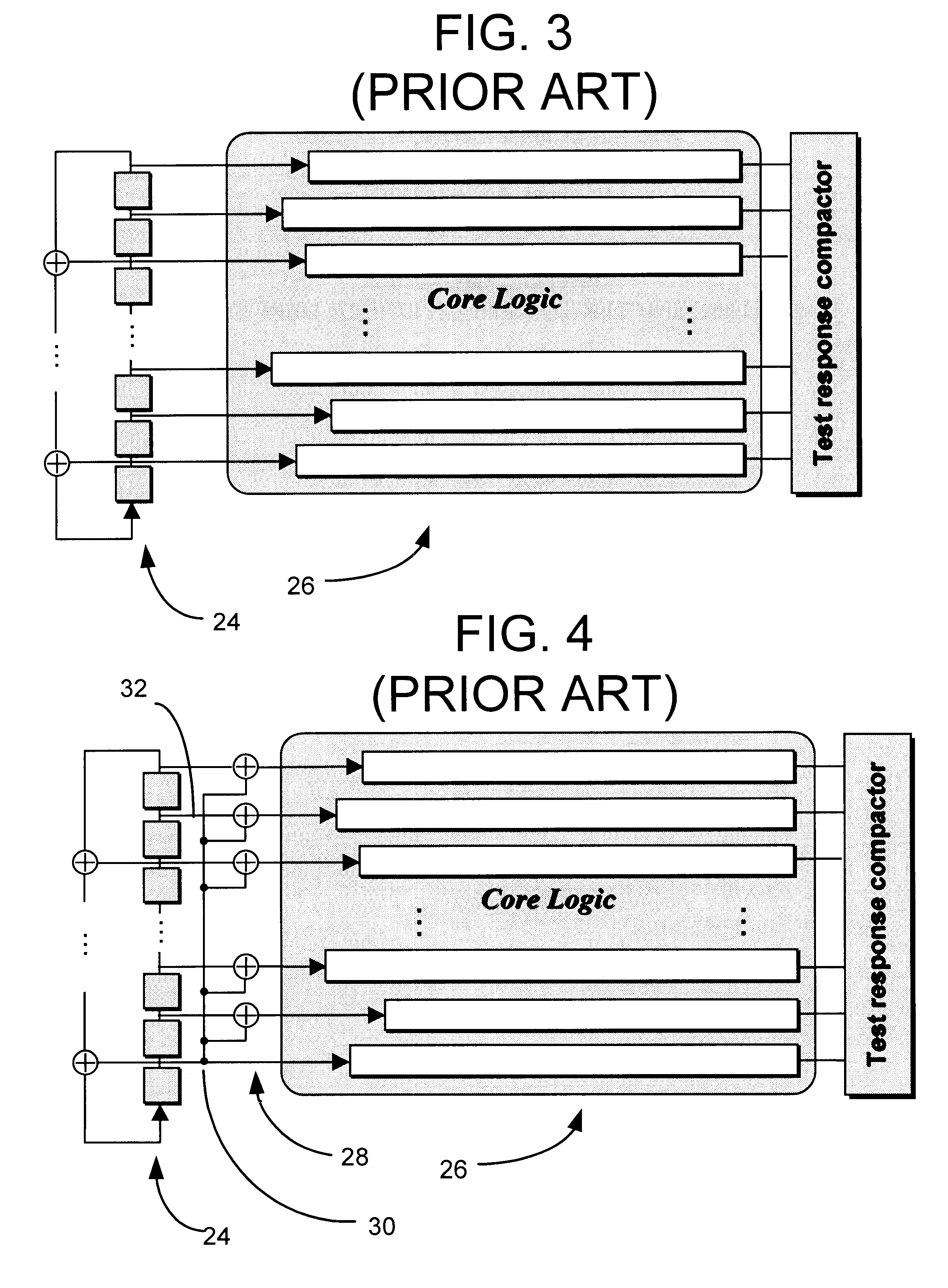Phase shifter with reduced linear dependency
a phase shifter and linear dependency technology, applied in the field of pseudorandom test vector generation, can solve the problems of increasing complexity of circuits, increasing logic-to-pin ratio, and high fault coverage of several types of fault models
- Summary
- Abstract
- Description
- Claims
- Application Information
AI Technical Summary
Benefits of technology
Problems solved by technology
Method used
Image
Examples
Embodiment Construction
Linear finite state machines (LFSMs), such as linear feedback shift registers (LFSRs) and cellular automata (CA), are often used for generating pseudo-random sequences. An example LFSM implements a characteristic primitive polynomial h(x)=hnxn+ . . . +h1x+h0 of degree n. Given this circuit, logic synthesis of phase shifters entails finding a set of linear combinations of the LFSM cell outputs such that each of the resulting sequences are shifted with respect to every other sequence by at least a pre-specified number of bits. Although a specific embodiment of the LFSM is described (i.e., a transformed LFSR), other LFSMs may be used. The transformed LFSR (also called the t-LFSR) includes memory elements in a ring structure with the feedback connections (in contrast to both type I and type II LFSRs) begin and terminate at different stages of the shift register, as shown in FIG. 5 for primitive polynomial x32+x18+x14+x9+1. For purposes of this description, the general form of LFSM shown...
PUM
 Login to View More
Login to View More Abstract
Description
Claims
Application Information
 Login to View More
Login to View More - R&D
- Intellectual Property
- Life Sciences
- Materials
- Tech Scout
- Unparalleled Data Quality
- Higher Quality Content
- 60% Fewer Hallucinations
Browse by: Latest US Patents, China's latest patents, Technical Efficacy Thesaurus, Application Domain, Technology Topic, Popular Technical Reports.
© 2025 PatSnap. All rights reserved.Legal|Privacy policy|Modern Slavery Act Transparency Statement|Sitemap|About US| Contact US: help@patsnap.com



